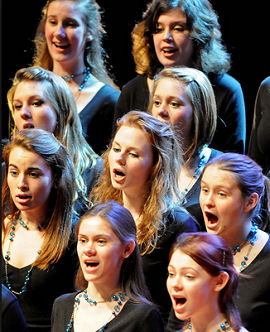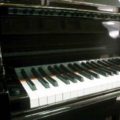
The musical scales that are most commonly used by composers are those that come closest to mimicking the physics of the human voice, say Duke University neurologists who claim that we understand emotions expressed through music because they mimic the way emotions are expressed in speech.
In two new studies, the Duke researchers show that sad or happy speech can be categorized in major and minor intervals – just as music can, and that the most commonly used musical scales are also based on the physics of the vocal tones humans produce.
Dale Purves, who led the first study (appearing in the Journal of the Acoustical Society of America), said there was a strong biological basis to the aesthetics of sound. “Humans prefer tone combinations that are similar to those found in speech,” he noted, adding that composers have long exploited the perception of minor chord music as sad and major chord music as happy and these attributes were mirrored in human speech.
In a second paper, appearing in PLOS One, Kamraan Gill, another member of the team, found the most commonly used musical scales are also based on the physics of the vocal tones humans produce.
Both studies, say the researchers, suggest the main biological reason we appreciate music is because it mimics speech, which has been critical to our evolutionary success.
To study the emotional content of music, the researchers collected a database of major and minor melodies from about 1,000 classical music compositions and more that 6,000 folk songs and then analyzed their tonal qualities. They also had 10 people speak a series of single words with 10 different vowel sounds in either excited or subdued voices, as well as short monologues.
The team then compared the tones that distinguished the major and minor melodies with the tones of speech uttered in the different emotional states. They found the sound spectra of the speech tones could be sorted the same way as the music, with excited speech exhibiting more major musical intervals and subdued speech more minor ones.
In the PLOS One paper, the researchers argue the harmonic structure of vowel tones forms the basis of the musical scales we find most appealing. They show the popularity of musical scales can be predicted based on how well they match up with the series of harmonics characteristic of vowels in speech.
Although there are literally millions of scales that could be used to divide the octave, most music is based on scales comprised of only five to seven tones. The researchers argue the preference for these particular tone collections is based on how closely they approximate the harmonic series of tones produced by humans.
Though they only worked with western music and spoken English, there is reason to believe these findings are more widely applicable. Most of the frequency ratios of the chromatic musical scale can be found in the speech of a variety of languages.
“Our appreciation of music is a happy byproduct of the biological advantages of speech and our need to understand its emotional content,” Purves said. Whether singing or speech came first is hard to say but co-researcher Dan Bowling supposes; “emotional communication in both speech and music is rooted in earlier non-lingual vocalizations that expressed emotion.”
Related:
The Rhythm (And Melody?) Of Life
This Is Your Brain On Jazz
Proteins Play The Piano
Catchy Tunes Have a Common Denominator


















Comments are closed.